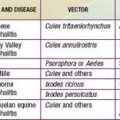Chapter 617 Disorders of the Lacrimal System
Dacryostenosis
A dacryocystocele (mucocele) is an unusual presentation of a nonpatent nasolacrimal sac that is obstructed both proximally and distally. Dacryocystoceles can be seen at birth or shortly after birth as a bluish subcutaneous mass just below the medial canthal tendon (Fig. 617-1). Initial treatment of dacryocystocele is usually conservative, involving massage/digital decompression of the lacrimal sac. If resolution of the dacryocystocele is not achieved with conservative management, the surgical probing may be beneficial. At times, the intranasal portion of the nasolacrimal duct becomes distended causing respiratory compromise. In a recent study, 9.5% of infants with dacryocystocele had related respiratory compromise. These infants benefit from early probing. Another associated complication of dacryocystocele is that of dacryocystitis/cellulitis. This requires systemic antibiotics, often with hospitalization. In the aforementioned study, 65% of infants with dacryocystocele developed dacryocystitis/cellulitis. Once the cellulitis has improved, the nasolacrimal system should be probed if spontaneous resolution has not occurred.
Hegab SM, al-Mutawa SA. Congenital hereditary autosomal recessive alacrima. Ophthalmic Genet. 1996;17(1):35-38.
Huebner A, Yoon SJ, Ozkinay F, et al. Triple A syndrome—clinical aspects and molecular genetics. Endocr Res. 2000;26:751-759.
Kushner BJ. Congenital nasolacrimal system obstruction. Arch Ophthalmol. 1982;100:597-600.
MacEwen CJ, Young JD. Epiphora during the first year of life. Eye. 1991;5:596-600.
Mondino BJ, Brow SI. Hereditary congenital alacrima. Arch Ophthal. 1976;94(9):1478-1484.
O’Driscoll TG. Alacrima. Trans Ophthalmol Soc U K. 1975;95:13-14.
Pediatric Eye Disease Investigator Group. Primary treatment of nasolacrimal duct obstruction with probing in children younger than 4 years. Ophthalmology. 2008;115(3):577-584.
Pediatric Eye Disease Investigator Group. Primary treatment of nasolacrimal duct obstruction with nasolacrimal duct intubation in children younger than 4 years of age. J AAPOS. 2008;12(5):445-450.
Schnall BM, Christian CJ. Conservative treatment of congenital dacryocele. J Pediatr Ophthalmol Strabismus. 1996;33:219-222.
Wong RK, VanderVeen DK. Presentation and management of congenital dacryocystocele. Pediatrics. 2008;122:1108-1112.








